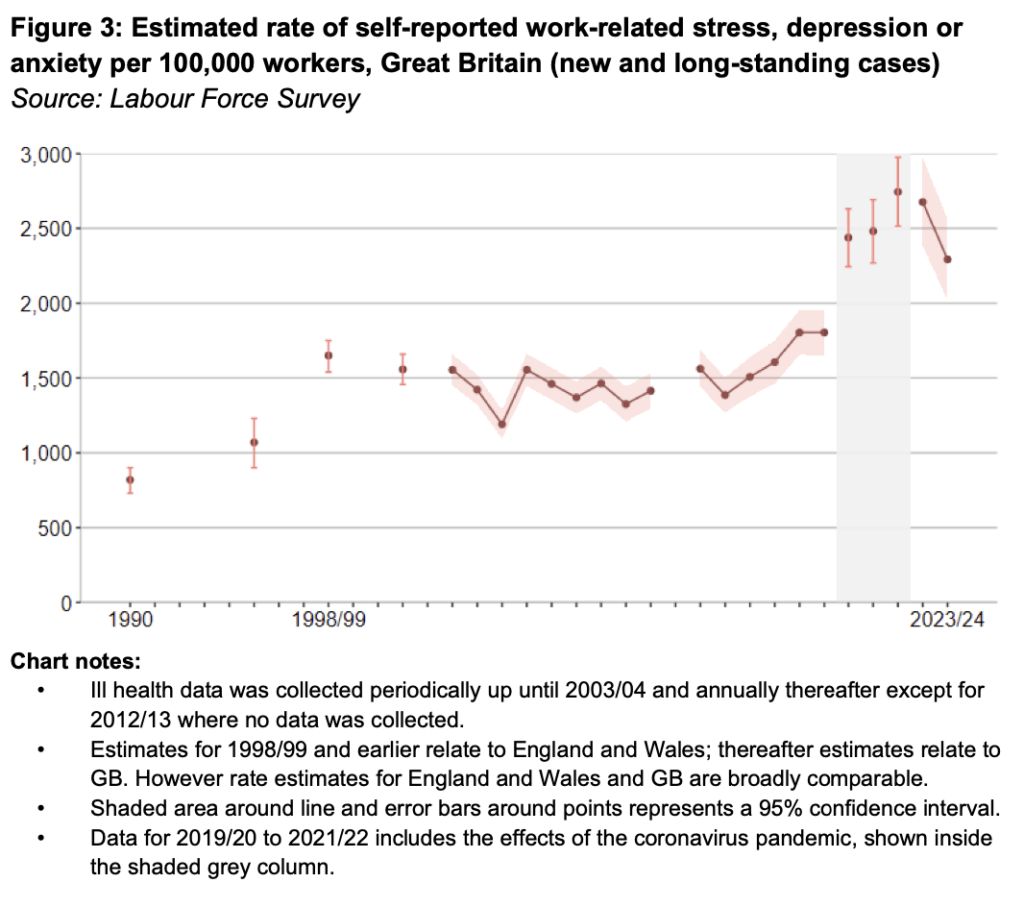As businesses strive for higher productivity, the importance of fostering a mentally healthy work environment cannot be overstated. Mental wellness is a process that we engage with proactively for better or worse. The main characteristics of mental well-being are:
- Feeling connected and supported in your social, working or familial circles.
- Being able to cope with stress & setbacks.
- Taking responsibility over yourself & others.
- Having a sense of purpose and being able to realise your potential.
- Experiencing joy, commitment & peace of mind.
Mental well-being is all about how we interact with ourselves and others. It also includes what we do and don’t do to support our social circles, physical health, personal spaces, goals, and self-image. While mental health is a part of mental well-being, it focuses on more diagnostic aspects.
Why Mental Wellbeing Matters at Work
It’s no secret that mentally healthy workplaces boost employee performance and creativity; and reduce both absenteeism and presenteeism. But how do organisations achieve this?
33.7 million working days were lost to work-related illness between 2024 to 2025 in Great Britain alone.
The Health & Safety Executive (HSE) report that stress, anxiety, and depression made up the reason for 24 million of these days, in addition to 76% of respondents directly reporting stress-related absence.

It’s starting to look like a mentally healthy workplace is just a hazy mirage on the horizon, or is it?
Companies can achieve healthier workplaces by creating healthier workplace cultures. Organisations that prioritise mental health & wellbeing already integrate supporting policies into their organisational culture. This means that the responsibility to create psychologically safe and supportive environments is shared between all individuals as well as management. By creating a community feel, organisations also promote a sense of belonging. Since mental well-being touches all corners of an individual’s life, the organisation must focus on ways they can improve someone’s experience when they’re in the office.
Some organisations go further to support their employees but it all depends on the organisation itself to decide where they might sit on that spectrum.
It is also up to managerial bodies to recognise shifts of energy within their teams. You can apply some logic to this by thinking about when larger changes were made and how this affected your team. Here are some extra questions to prompt you:
- Have you’re teams had a recent restructure?
- Are your teams experiencing increased pressure from stakeholders, clients, or management?
- Is it common for your team members to react negatively to constructive criticism?
- We don’t openly discuss mental health and well-being in work.
- Have you noticed changes in team morale or energy levels recently?
If you answered ‘yes’ to most of these questions, your team’s ability to stretch may be compromised. This means that when approached with further challenges, they are more unlikely to cope with the demands. We’d recommend performing Well-being Assessments to understand where your teams’ mental health and well-being is at before implementing further supporting frameworks. Contact us here to learn more about the Warwich-Edinburgh Wellbeing Scale (WEMWBS) and how it can benefit your team.
What can companies do to support mental well-being?
- Support employees in accessing mental health resources, such as counselling or support services.
- Equip management with the skills to have sensitive conversations about mental health with their teams.
- Celebrate successes and support employees during challenging times.
- Flexible working options in place to help employees balance work and personal life.
- Gather employee feedback on mental wellbeing initiatives.
- Recognise and address signs of burnout or stress within your team with a clear action-plan.
- Develop clear support systems for employees going through difficult personal situations.
- Regularly review and adapt well-being policies to meet employees’ needs.
Learning & Development Routes for Employers:
Promoting mental wellbeing in the workplace is an ongoing journey that requires commitment from all stakeholders. By addressing mental health proactively, companies can build healthier, happier, and more productive workforces.
- Senior Leadership Commitment: Ensure senior leaders prioritize workplace health and wellbeing and integrate it into the organization’s culture.
- Line Manager Training: Equip line managers with skills to support employee wellbeing through manageable workloads, clear objectives, constructive feedback, and sensitivity in conversations about health needs.
- Access to Support Services: Provide early access to occupational health, counselling, physiotherapy, and other specialist support.
- Data-Driven Insights: Identify causes of absence, presenteeism, and leaveism to address underlying issues and improve long-term wellbeing.
- Bespoke Wellbeing Strategies: Develop policies and practices based on the unique needs of your organisation and its employees.
- Mental Wellbeing Culture: Foster an open environment where mental health is supported and employees feel safe to seek help.
- Preventive Risk Assessment: Conduct regular assessments of work-related stress to identify and mitigate potential risks proactively.

